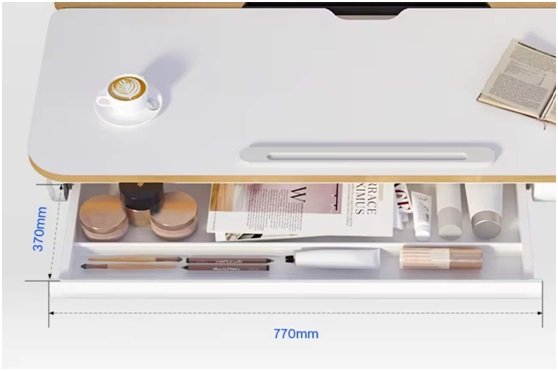An essential function of children’s tables and chairs is to provide a comfortable learning environment. This includes ergonomic design, such as proper seat height and angle, to support children’s adequate sitting posture and reduce stress on the back and neck. In addition, children’s tables and chairs should be spacious enough to accommodate learning materials and books and provide a good work surface. Choosing the right children’s table and chairs is crucial to your child’s learning and growth. Here are some essential things to remember when selecting childrens desks.
Things To Consider When Choosing Children’s Desks
Ergonomic Design
A good children’s table and chairs should consider children’s physical characteristics and developmental needs. Ensure that the table height matches the child’s size so they can naturally bend their elbows and knees and maintain a proper sitting posture. In addition, the seat depth and height of the chair should be appropriate for the child’s body type, providing adequate support and reducing stress on the back and lumbar spine.
Solid And Durable Construction
Children’s tables and chairs should have a solid and durable construction that can withstand children’s use and activities. Choose tables and chairs made from high-quality materials such as solid wood, steel, or durable plastics to ensure a long lifespan. In addition, check that the connectors and support structure of the table and chairs are strong and reliable to avoid instability or looseness.
Safety Design
The safety of children’s tables and chairs is a crucial consideration. Ensure that the edges of the tabletop and chairs are smooth and rounded to avoid sharp corners that may cause injury to your child. Also, check for any protrusions or moveable parts to minimize the risk of accidents. Choose products that meet national and regional safety standards and look for relevant certification marks.
Adjustable Features
Good children’s tables and chairs usually have adjustable features to accommodate children of different ages. For example, the table height, chair height, and tilt angle can be adjusted to meet your child’s growth and learning needs. This design ensures that your child is always in a comfortable and correct position, promoting their learning outcomes and physical development.
Appropriate Storage Space
Considering that kids usually need to store books, stationery, and other school supplies, it is essential to choose a kid’s table and chair equipped with proper storage space. For example, choose a table and chair with drawers, shelves, or storage boxes so that your child can easily organize and access school items. Such designs help develop your child’s tidiness and organizational skills.
Balance Of Aesthetics And Functionality
Children’s tables and chairs should be both attractive and functional. Choose a bright, colorful style to capture your child’s attention and interest. It’s also important to consider whether the tabletop space is large enough to accommodate the learning materials and tools your child will need. Balancing aesthetics and functionality ensures that your child enjoys a comfortable environment while being able to perform learning activities efficiently.

User Reviews And Word Of Mouth
Checking out reviews and feedback from other users is an excellent way to refer to them before purchasing a children’s desk and chair. Knowing what other parents and children have to say about the experience and quality of a particular product can help you make a more informed decision. It is also a good idea to consult the advice of professionals, such as educational experts or children’s furniture salespeople.
Summary
Selecting the right children’s table and chairs requires a combination of the above factors, with decisions based on the individual child’s needs and the family budget. Choosing the right children’s table and chairs for your child can provide them with a good learning environment that promotes learning effectiveness, growth, and development.

